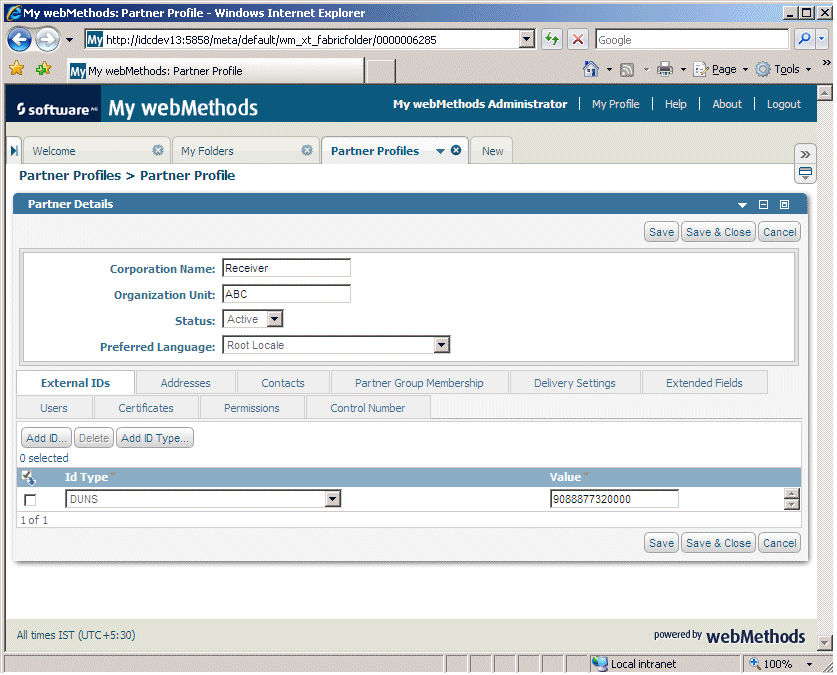Trading Networks
Trading Networks enables you to build and manage a peer-to-peer or hub-and-spoke network of trading partners. Trading Networks enables trading partners to exchange business documents in XML and structured flat-file formats.
Trading Networks offers a browser-based user interface in which you build the elements you need to define and link trading partners. The illustration below shows a partner profile definition in this user interface.
Elements you need to define and link trading partners are as follows:
Element | Purpose |
Trading partner definitions | Define and administer your trading partners. |
Business document types | Define the business documents that trading partners want to exchange. A business document type can define an industry-standard document, such as an EDI, RosettaNet, cXML, CBL, or OAG document, or a custom business document. |
Processing rules | Define how to process business documents. For example, the processing rule for a purchase order you receive from a trading partner might verify the sender's signature and then submit it to your order management system. Note: | If you need more complicated processing than is possible in the Trading Networks user interface, you can design a business process in Designer to use in addition to or instead of a processing rule. |
|
Trading Partner Agreements (TPAs) | Customize the way in which documents are exchanged between trading partners. For example, you and a trading partner might use a TPA to specify a custom ID field to include in all business documents. |
Trading Networks provides templates that enable you to easily create onboarding questionnaires. Partners can respond to onboarding campaigns by replying to email invitations or by accessing self-service portals. Trading Networks administrators can easily generate reminder emails to partners that have not responded.
Trading Networks also includes a component that runs on Integration Server and manages the exchange of business documents among trading partners. When Trading Networks receives a document, it processes the document according to the processing rule for that document type.
Trading Networks provides a flexible schedule-based ability to suspend document deliveries to partners. Administrators can proactively schedule document delivery suspensions as necessary to accommodate planned partner outages.

